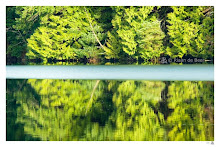 The second point I would like to make relates to the expectation of objective reality captured on photos. This notion has gradually been challenged at ever deeper levels over the last century. In 1858 there was deep shock when “fading away” was published by Robinson. It was a photo that was assembled from multiple negatives and that portrayed a woman on her death bed by models. People thought that it was a real image of a real dying person and thought it was intrusive for a photographer to take a photo at such a private moment.
The second point I would like to make relates to the expectation of objective reality captured on photos. This notion has gradually been challenged at ever deeper levels over the last century. In 1858 there was deep shock when “fading away” was published by Robinson. It was a photo that was assembled from multiple negatives and that portrayed a woman on her death bed by models. People thought that it was a real image of a real dying person and thought it was intrusive for a photographer to take a photo at such a private moment.
 At the time visual culture was in its infancy and people did not understand what they saw. Today it is difficult to imagine that people would really believe in the objectivity of images because we are so used to being bombarded by fictional imagery. However, I suspect that deep down many people actually still do expect it, even if they do not really believe it anymore. I suspect that we blame the computer age for the demise of honesty in imagery and we long for a return to a place where we can believe what we see.
At the time visual culture was in its infancy and people did not understand what they saw. Today it is difficult to imagine that people would really believe in the objectivity of images because we are so used to being bombarded by fictional imagery. However, I suspect that deep down many people actually still do expect it, even if they do not really believe it anymore. I suspect that we blame the computer age for the demise of honesty in imagery and we long for a return to a place where we can believe what we see.
The truth is that it is not a technological question. It is rather a case of a maturing understanding of the meaning, limitations and risks of images. Photos have always been subjective. The photographer always chooses an angle of view, decides to exclude certain things from the view and put emphasis on others. It has always been a personal and subjective view of reality. This is especially true in fine art photos where the artist specifically attempts to communicate a unique view of the world.
So why did I decide to limit my manipulation of images in the computer?
It is a matter of personal integrity.
I love the hunt for and the thrill of finding and making a good image in the camera. This is the one aspect of the craft of photography that has not changed at all. Secondly I am trying to reveal my personal view of Existence with the Sacred in Creation. To find and reveal the inspiring, uplifting and beauty of this place while my journey here lasts. I chose to do that through a medium where I capture glimpses of time and place of this temporal world. My images is a portrait of my personal journey of stumbling towards a grounded and meaningful sense of “Being” in this world. To me it would be dishonest to create an “artificial” reality in a computer to portray that search since it would be disconnected. The final reason is simply that I have no passion for computers and would rather spend my time with a camera in nature, than in Photoshop under artificial light.
The ethical boundary should be defined in being honest about what the artist did, rather than how it was made. When images are meant to deceive they are unethical, when images portray the artist’s intent honestly they are ethically fine. There is nothing wrong with creating “artificial” photos in a computer and to sell it as fine art, if the artist honestly states that it is an artificial image and if it is integrated into their view of the world.
If you are interested in umderstanding the Histroy of Photography better, I would encourage you to listen to Jeff Curto's podcasts. Especially his History of Photography series. It can be found in Itunes by doing a search fro his name.



No comments:
Post a Comment